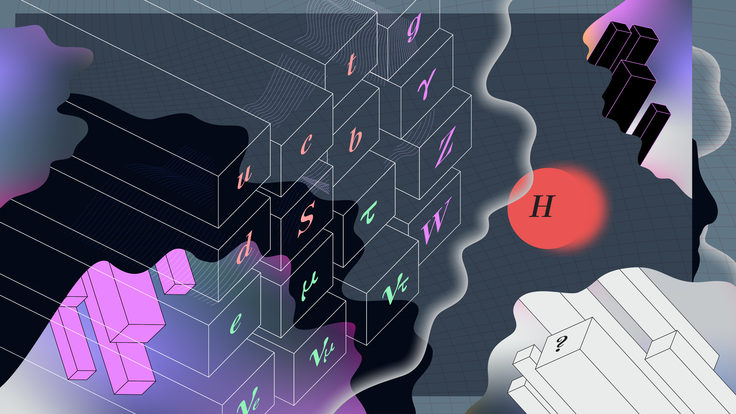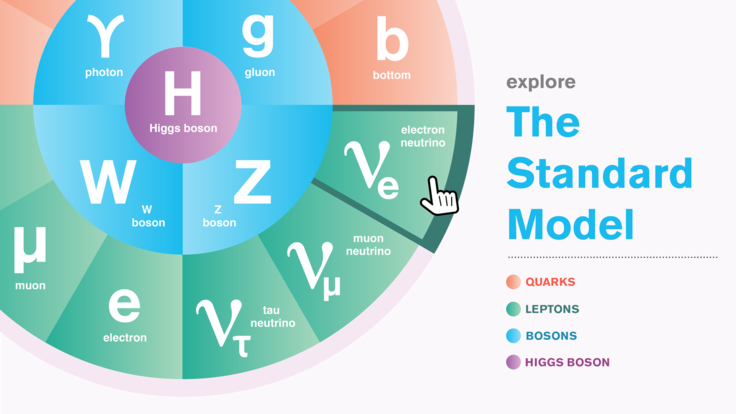Heliums shrinking bubble
Helium is the lifeblood of large particle accelerators. As the worlds supply dwindles, the particle physics community must take steps to preserve this precious commodity or learn to live without it.
By Calla Cofield
 |
|
| Photography by Reidar Hahn | |
 |
At a couple of degrees above absolute zero, far colder than any living organism can survive, liquid helium stirs to life the largest particle accelerators in the world. It pulses through the veins of the Large Hadron Collider, following thousands of dipole superconducting magnets around a 27-kilometer ring. Flowing through magnets in Fermilabs Tevatron, it helps jump-start subatomic particles on their way. These and other vital organs at dozens of labs around the world depend on helium to help them thrive.
Hot air balloons, blimps, car airbag systems, welding, leak detection, scuba breathing mixtures, and NASA space shuttles all use helium. Cryogenics, which includes cooling for particle accelerators and detectors, consumes 28 percent of helium in the United States, with half of that chilling tens of thousands of Magnetic Resonance Imaging, or MRI, machines. And the market is growing.
At the turn of the 20th century, natural gas miners found helium coming from underground, produced by the radioactive decay of uranium and thorium. It appears in pockets of natural gas in small portions, with three percent helium considered a good ratio. Although helium is relatively easy to extract, it falls on the natural gas companies to capture the gas or let it go.
Lighter than air, helium released from the Earth escapes the atmosphere into space. As the second-smallest atom in the universe, the cunning gas finds its freedom through almost any opening, joint or crack, eventually leaking out of party balloons and even passing through some types of glass. Like oil, coal, and natural gas, Earths supply of helium will inevitably run out.
While the physics community is aware of this impending problem, says Fermilab cryogenic engineer Tom Peterson, were just not sure what to do.
The coldest liquid
Helium, says Serge Claudet, is a very nice gas.
Claudet is head of the Large Hadron Colliders cryogenics operation team, and he has a very specific set of qualifications for a nice gas.
Placid helium is non-flammable, a big bonus for facilities storing large quantities of it. A noble gas, it is also easy to keep clean since it doesnt tend to bond to other elements. Helium is the only element that is liquid at nearly absolute zero, and even at that frigid temperature solidifies only under pressure. Heliums ultra-cool nature makes it the perfect optionthe only optionfor many superconducting applications.
At super-cold temperatures, certain materials such as copper, aluminum, and niobium titaniumlose all resistance to electricity. This allows electrons to flow uninhibited, delivering current with 100 percent efficiency. Wrapped into coils, superconducting wires become electromagnets that substantially outperform conventional magnets in the strength of their magnetic fields. With this strength, scientists can steer particle beams around circular tracks, as the particles move at nearly the speed of light.
To maintain these cold temperatures, superconducting magnets require a liquid coolant that will flow over them, pick up excess heat, and carry it away.
The helium refrigeration system at Fermilab rumbles with the get-up of 10,000 horsepower, cooling 10,000 liters of liquid heliuma little more than enough to fill two double-decker buses. Helium exits the refrigeration unit through pipes of stainless steel, one of the few materials that wont become brittle and crack at 1.8 kelvin, or minus 456 degrees Fahrenheit. Peterson and the cryogenics team surround that pipe in a vacuum, seal it in a second pipe, box the pipes in a copper thermal shield, wrap that in another layer of shielding, and weld the whole package inside a vacuum-tight steel container. Its the ultimate thermos, dedicated to reducing heat loss to zero.
Liquid helium is a utility in the production of the particle beam, like power or water, Peterson says. When the cooling is available, experimenters dont think much about it. It is when it goes away that you notice it.
 |
A knack for getting loose
In theory, a system carrying helium through a facility like Fermilab should never need to replenish its supply. It should carry cold helium to its target, bring warmed helium back to the refrigeration unit, and so forth.
But joints in miles of piping and hair-line cracks unseen by engineers leave helium just enough room to escape. Materials commonly used to seal up joints become brittle at 1.8 kelvin and cryogenics teams can dedicate only so much time to searching for leaks. Brookhaven National Laboratory holds 50,000 liters of liquid helium and loses 20 percent to leaks per year; after the LHCs yearly shut-down, cooling-down, and starting up, the helium loss is about 25-30 percent. This leaked helium is rarely recovered. In addition, power outages cause helium to heat up and expand beyond what facilities can hold, forcing them to release it into the atmosphere.
In 1925, the US government recognized heliums limited availability and began storing it in the Federal Helium Reserve in Amarillo, Texas. In the 1990s, in an effort to keep helium costs down, the government began selling off the reserve. Debate over this decision still rages between those who would like helium costs capped, and those who worry what will happen when the supplies run out. Even so, prices have nearly doubled in the United States in the past three years.
In 2007, several US helium refineries failed to come online as scheduled, due to a series of coincidental delays. Helium users felt the pinch. Roberto Than, a cryogenics specialist at Brookhaven, says the labs supplier warned of possible delays in delivery. It turned out to be a close call. We were still able to get it on time, Than says, allowing the labs Relativistic Heavy Ion Collider to start up on schedule.
 |
|
| Helium may be the second most abundant element in the universe, but on Earth its a non-renewable resource. Physicists and engineers are working on ways to conserve and recycle this essential gas so it doesnt just float away. | |
Making recycling pay
Although experts know helium isnt as rare as xenon nor as abundant as nitrogen, they have difficulty assessing just how much helium is left underground, and they cant tell how much of that will be captured by natural-gas miners. It is possible that in as little as 30 years, world helium production could peak.
While there is no direct concern for tomorrow, Claudet says the particle physics community does have a focus on helium conservation, and notes that over the past 30 years helium recovery efforts have improved significantly. Large facilities like CERN, Fermilab, and DESY have always liquefied their own helium and have increased efforts to recapture it. At SLAC National Accelerator Laboratory, workers built a custom recycling unit to purify contaminated helium from the PEP-II accelerator when it was running.
At CERN were working on diminishing losses, Claudet says. Were trying to increase storage and become less dependent on the helium market.
Many small particle physics facilities dont use enough helium to make recovery cost-effective. Refrigeration machines need frequent maintenance and eat up a significant amount of power. So used helium is often released into the atmosphere.
But a new technology may change that. The Soudan Mine in Minnesota hosts the Cryogenic Dark Matter Search, CDMS, in a laboratory a half mile underground. There, protected from cosmic rays, physicists hope to identify the passage of dark matter particles. To reduce thermal noise, they cool their germanium and silicon detectors with liquid helium.
In May 2009, Soudan scientists carefully lugged a new type of helium refrigerator, called a cryocooler, down a 12-foot-wide, 2341-foot-deep mine shaft that provides the only entrance to the laboratory. These small helium liquefiers, about the size of a household refrigerator, cost less than one-fifth the price of a traditional liquefier. Dan Bauer, who manages the CDMS project, explains that the labs 60-liter-per-day helium usage wouldnt justify the cost of a traditional liquefier, especially since the older units usually need maintenance every few weeks. But the cryocoolers are a perfect fit for Soudan, and need maintenance only every year or two.
Bauer says he learned about the cryocoolers less than two years ago and made a move to obtain them right away. With helium prices climbing the way they are, the coolers should pay for themselves in less than two years.
Pressing ahead
Peterson is now working on designs for the International Linear Collider, which would rely on liquid helium as well. But by the time it is built and running, physicists may already need to be on the lookout for alternatives.
High-temperature superconductors present one possibility. Scientists are working doggedly to understand the mechanics of superconductivity, and hope to achieve it at temperatures where elements such as nitrogen are still liquid and can be used as coolants. Nitrogen is cheaper than helium, represents about 80 percent of the air we breathe, and isnt flammable or explosive like hydrogen. However, at this time there are no high-temperature superconductors that could fill the needs of particle accelerators.
While the particle physics community must do its part to preserve the worlds helium supplies, in some ways its hands are tied. Although facilities like Fermilab and CERN use helium on a larger scale than most, they represent only a very small percentage of overall helium consumption. For that reason, their conservation efforts alone wont stop a helium shortage.
But that hasnt stopped them from trying. Conservation efforts at large facilities continue to improve and grow, while physicists and engineers press ahead to create new technologies that could cut helium usage across the board. Slowly but surely, high-energy physics is preparing for a possible helium shortage. Only time will tell if it is acting fast enough.
Click here to download the pdf version of this article.






